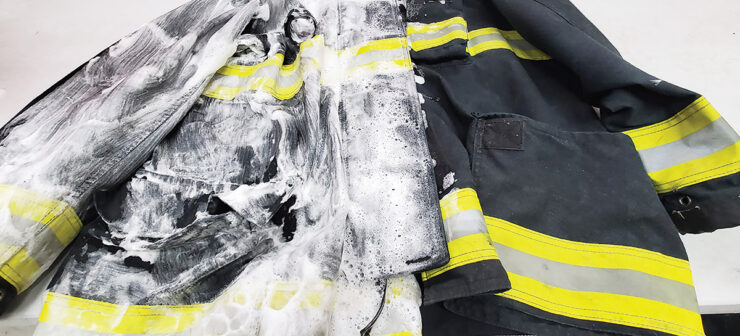As you have seen in previous articles, I have spoke about things that are near to my heart, like peer support, and women in the fire service. In this article I am going to speak about firefighter cancer. Cancer is a leading cause of death among firefighters, and research suggests firefighters are at higher risk of certain types of cancers when compared to the general population.
According to previous NIOSH reports, firefighting settings are complex and contain various hazardous substances. Firefighters can be exposed to hundreds of chemicals in the form of gases, vapors, and particulates. Some of these chemical substances are known or suspected to cause cancer. Some of these hazardous substances are byproducts of combustion or burning, such as benzene and formaldehyde. Others come from the materials burning or in the fire debris, such as asbestos from older structures.
Firefighters can come into contact with chemicals by breathing them in, getting them on their skin or in their eyes, or ingesting them. If protective clothing, known as turnout gear, is not adequately cleaned or stored after a fire response or training event, chemicals on the gear or equipment can contaminate vehicles and the fire station. Reusing dirty turnout gear or respiratory protection can also result in exposures to hazardous substances. These exposures can occur by skin contact with contaminated personal protective equipment (PPE) or by breathing in or ingesting particles from contaminated PPE.
As far as prevention, it is important for the fire service to educate its members about safe work practices. Effective training promotes sound work practices. Sound work practices are designed to reduce exposures to hazardous agents, which is key to reducing occupational illnesses, including cancer. Training should emphasize the proper use and care of PPE and turnout gear and the proper use of approved respiratory protection during all phases of firefighting. Training that increases cancer awareness and physical well-being may encourage firefighters to adopt work practices that lower their exposures to cancer-causing substances. It can also help promote healthier lifestyles that may also reduce their cancer risk and increase the use of cancer screening tools.
Last year the National Volunteer Fire Council came out with the Lavender Ribbon Report. This report reported the best practices for preventing firefighter cancer. They stressed on 11 points and they are as follows.
1. Full protective equipment (PPE) must be worn throughout the entire incident, including SCBA during salvage and overhaul.
2. A second Nomex hood should be provided to all entry certified personnel in the department.
3. Following exiting from a structure fire, and while still on air, you should begin immediate gross decon of PPE using soup water and a brush, if weather conditions allow. PPE should then be placed into a sealed plastic bag and placed in a exterior compartment of your truck or if responding POV place the gear in a large storage tote, thus keeping the off-gassing PPE away from passengers and yourself.
4. After completion of gross decon procedures, and while still on scene, the exposed areas of the body, neck, face, arms and hands should be wiped off immediately using wipes, which must be carried on all apparatus. Use the wipes to remove as much soot as possible from head, neck, jaw, throat, underarms and hands immediately.
5. Change your clothes and wash them after exposure to products of combustion or other contaminants. Do this as soon and isolate in a trash bag until washing is available.
6. Shower as soon as possible after being exposed to products of combustion or other contaminants. Golden rule “Shower within the hour”
7. Your PPE especially turnout pants, must be prohibited in areas outside the apparatus floor, ie the kitchen, sleeping areas in the fire house, and never in the household.
8. Wipes, or soap and water, should also be used to decontaminate and clean apparatus seats, SCBA and interior crew regularly, especially after incidents where personnel were exposed to products of combustion.
9. Get an annual physical, as early detection is the key to survival.
10. Tobacco products of any variety, including dip and e- cigarettes should never be used at anytime or on or off duty.
11. Make sure to filly document ALL fire or chemical exposures on incident reports and personal exposure reports.
As you can see there are many ways to protect our firefighters, we should practice what we preach and protect out personnel and their well-being.
If the FFAM can be of any assistance to you or your department, please reach out to us. I can be contacted at grant_oetting@yahoo.com or 660-229-4525. If I don’t answer, please leave a voicemail and I will be glad to return your call when I am available. Until next time, Be safe my brothers and sisters.


































